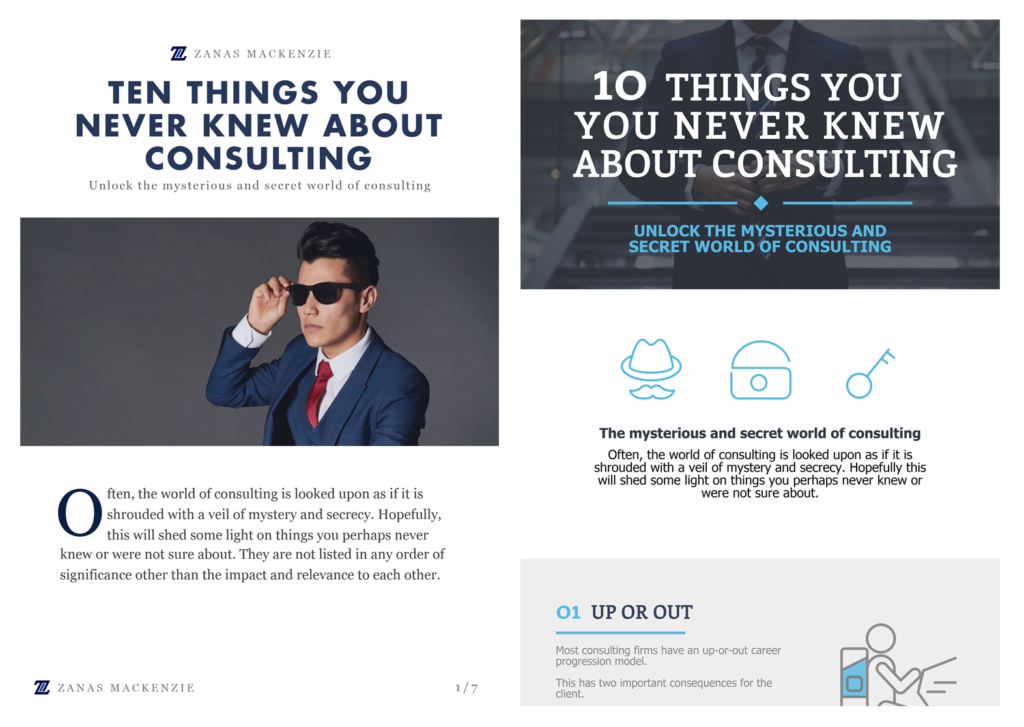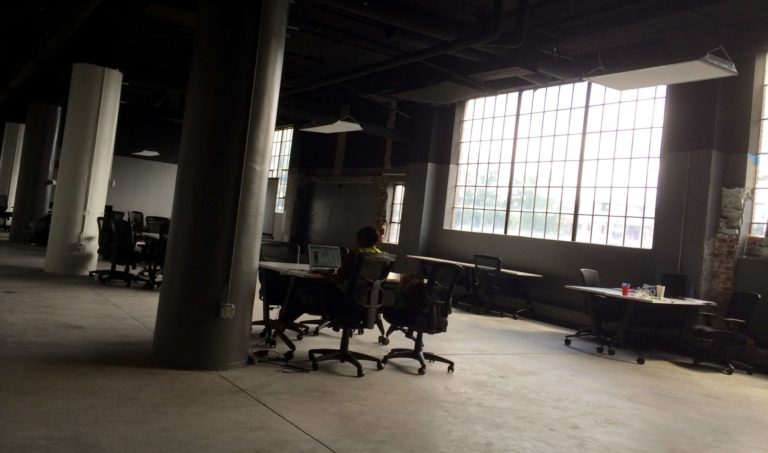Unlock the mysterious and secret world of consulting
Often, the world of consulting is looked upon as if it is shrouded with a veil of mystery and secrecy. Hopefully, this will shed some light on things you perhaps never knew or were not sure about. They are not listed in any order of significance other than the impact and relevance to each other.
1. UP OR OUT
Most consulting firms have an up-or-out career progression model. While we can argue whether this is correct, ethical, justified, or otherwise, this is due to the pyramid/leverage model (more on this later). This has two important consequences for the client. One, the most experienced people are ALWAYS the most expensive. Two, it is difficult for consulting firms to retain people who want to specialize instead of broadening themselves.
2. Bait and Switch
This is a technique often used by consulting firms to show off expertise and credentials during the business development and proposal process. Often, clients complain that the experts who were introduced for the project ultimately hardly ever show up to produce productive work. Instead, these consultants are replaced with less experienced resources to ensure proper balance of project cost/margin.
3. Leverage Model
While clients complain about consulting fees, it is important to understand the leverage model used. In order to attract and retain the best talent, provide career advancement, and to keep projects profitable, the project teams are skewed to the less experienced resources (see the 2 previous points). This is more an art than a science, and often impacts the project through overruns, delays, and in some cases mistakes and failures.
4. Onshore / Offshore
In order to maximize project profitability, large consulting firms use a mix of onshore (local) and offshore resources (e.g. India, Philippines, Eastern Europe), as well as what are called landed resources from various locations. This has a number of implications such as language and cultural issues, and can have an impact on team dynamics, continuity, and project success. Furthermore, this presents additional challenges for the consultants to coordinate successful project work and ensure delivery success.
5. Long Hours
Yes, consultants often work long hours in order to keep up their utilization statistics. Many consultants work on multiple projects at the same time because utilization has a major impact on their promotion and advancement prospects in the firm. This could have an impact on the time and focus dedicated to your project, so make sure you get some reassurances.
6. Subcontractors
Consulting firms often use subcontractors on projects. This may be because local talent is not available and it is not cost-effective to bring in foreign talent. In and of itself, that is not necessarily an issue, but it can result in lack of project continuity, when projects overrun and they have to roll onto other projects. Consulting firms have better control over their own employees. Also, typically, subcontracting work is billed through directly to the client projects. This can have an impact on subcontractors not taking responsibility for their part of the client success or the milestones they are responsible for. Ask the right questions…
7. Industry Expertise
Experts are introduced at the wrong time during the projects. This is a result of either the eagerness of selling the projects or the lack of availability of these subject matter experts at times when they are needed on-site. Furthermore, while clients do and may insist on industry expertise, they are not often enough given credit for the expertise they have in-house. The old adage of ‘the answer is always in the room’ holds often true, and it is a matter of facilitation, workshops and client/consultant team work to bring it out.
8. Padded Invoices
While by no means this is true for all consultants, many consultants add expenses as a percentage of fees added to the cost of the projects. Ask for a detailed accounting of admin and travel/lodging, communication costs, and ensure that this is tightly monitored within your organization. Also, if you agreed to a ‘time and material’ based project, ask for timesheets to verify hours billed. In case you agreed to a fixed cost delivery project, ensure that any overruns are caused by delays on your end, and in line with the terms and conditions of the project.
9. Requests for Proposal (RFP)
Consultants hate RFP, in general, and with justified reason. Either the RFP has been prepared by people with less than adequate knowledge and experience within the client organization, OR the RFP had been prepared by another consultant (or knowledgeable client personnel) who has tailored and manipulated the RFP to bias the outcome to themselves or another favored organization. Furthermore, it is true to say that in 80 percent plus of the cases, what was in the initial RFP is not what if finally delivered, for a myriad of valid and justifiable reasons. Nothing ever stays the same…
10. Risk Awareness and Risk Avoidance
It is easy to understand why consultants are risk-averse. Proposals and ensuing contracts are written in such a way to avoid as much liability and responsibility as possible. In fairness to the large consulting firms, that have often been targeted (some justified, others not) with huge lawsuits. However, with the right mindset and end goals in mind, it is possible to reach a win-win outcome, instead of the lose/lose win/lose, lose/win.
These considerations may scare you, but with the right intent, mindset and communication you can get the best benefit from a collaboration with consultants.
Our experiences running companies globally teaches us this needs to change. So we practice Consulting. Inside Out. It may be right for you.
Spread the word
Co-founder and Managing Director

Patriek has more than 30 years of working with consulting and technology giants (Andersen, Unisys, IBM) and start-ups in many industries across three continents. He has been in Asia since 2005. First in mainland China, Taiwan, and Hong Kong. Since 2012, he lives and works in Thailand, with extensive work experience and responsibility for South East Asia.
As a result of all of these experiences, Patriek’s passion for helping companies embrace and benefit from change led him to create a new company with a unique approach to unlocking value.
Patriek focuses on operational strategy and change management. He obsesses about delivering value from within through business transformation and integration. At Zanas MacKenzie, Patriek is primarily responsible for business strategy and business development.
Free White Paper & Infographic




